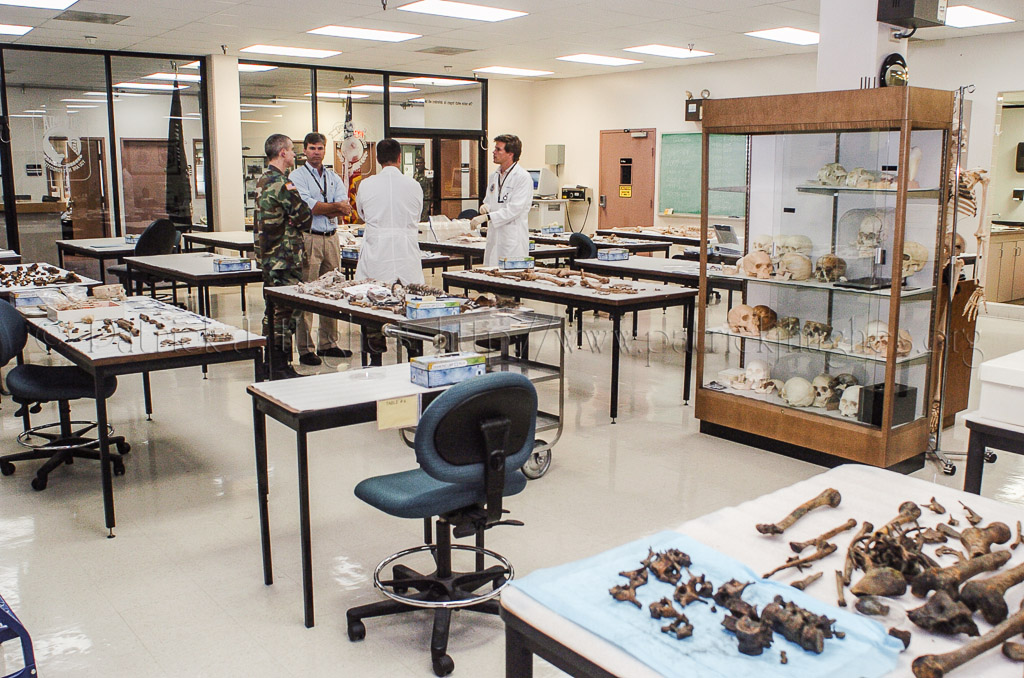At the beginning of a recovery, the anthropologist sections the site into grids with stakes and string. Then, each section is excavated one at a time. This allows the team to precisely track what the teams find and where they find it. To help with what can be a massive soil removal effort, DPAA may hire anywhere from a few to over one hundred local workers. Every ounce of soil dug from the site is sifted by hand through quarter-inch wire screens. The screens allow team members to catch even the smallest pieces of remains, artifacts or personal effects. Recovery sites range in size from a few square meters, such as individual burials, to areas larger than football fields for aircraft crashes. When dictated by the environment or soil conditions, teams may also employ wet-screening techniques, where all soil/mud is washed through wire mesh with high-pressure hoses.


Share Share Tweet Share Pin It Email